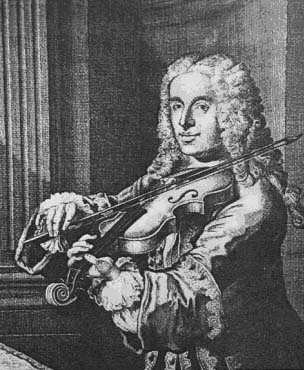
Italian Baroque composers such as Corelli, Tartini, and Vivaldi have long been associated with the early development of the violin as a virtuoso instrument. Less well known, now, is Francesco Maria Veracini. Born in Florence in 1690, Veracini traveled throughout Europe, dazzling audiences with his violin sonatas and concertos. The English composer and music historian Charles Burney (1726-1814) described Veracini’s playing in 1745:
He led the band…in such a bold and masterly manner as I had never heard before…The peculiarities in his performance were his bow and, his shake [trill], his learned arpeggios, and a tone so loud and clear, that it could be distinctly heard through the most numerous band of a church or theatre.
Suzuki violin students will recognize this Gigue from Veracini’s Sonata No. 7 in D minor. Suzuki included it towards the end of Book 5. Here is a thrilling period performance by violinist and conductor Fabio Biondi. Notice Biondi’s spirited ornamentation:
Listen to the first, second, and third movements of Sonata No. 7.
Additional Listening
- Find this recording at Amazon
- Sonata No. 8 in E minor– Shinichi Suzuki includes the complete piece at the end of Book 8.
- Sonata No. 12 in D minor– This piece begins with a mournful chromatic descending passacaglia.
